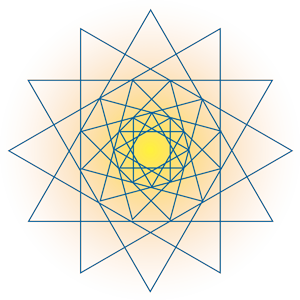The Creative Use of Thought Energy - September 2018
A moment’s consideration of this title will reveal that there are two ways in which thought can be used, the creative and the uncreative. Although we may not have realised it, we are actually all familiar with the uncreative use of thought. It is found in the usual passive response to the prevailing currents of ideas which can be experienced in every field of human activity. Left alone, or just accepted as conventional wisdom they follow their natural course of conditioning people and society until they eventually crystallise into objects that have fulfilled their usefulness and therefore need to be jettisoned in favour of newer and more flexible mental energy patterns. This is the slow, largely uncreative path of routine living.
But when we learn to work with and vitalise these thought patterns, which are in truth jewels of priceless geometry, we find that they can be developed and be of continuing value. This is where the disciplined use of the group mind motivated by love and vision for the whole becomes of crucial importance. Now we are starting to become creative. When some form of change is proposed, instead of asking the question, why? we start to ask why not! Then we become exposed to new vistas of the possible which had been hidden by our blinkered acceptance of the purely conventional. It is found that ideas as well as people will evolve given the right encouragement and energising.
But how can we be truly creative? In essence it lies in a dual ability. Firstly we need to perceive the great abstract archetypes of the Plan for humanity and our Earth – what Patanjali called “the raincloud of knowable things”. These gifts for the future are hovering over the mind of humanity inviting our creative interaction. We can collectively reach up and touch an aspect of them for a short moment and see the vision and meaning of things as they could be – and one day surely will be. Then we have to bring them down to more concrete mental levels where we apply the abstract principle we have absorbed to specific states of affairs in the human kingdom.
Creativity is often associated with the arts where originality and beauty are combined into an inspiring painting, say, or a piece of music or theatrical event. But the creative use of thought can be found in all fields of human enterprise. We can think of the great discoveries of science and their application to make human living more imaginative and less painful. In politics or economics we can see ideas being thrashed out in debate till a progressive and realistic path forward can be discerned. In the world of religion the creative use of thought is bringing the world’s faiths into a state of mutual respect and understanding. Creativity is indeed at the centre of the best that humanity has produced.
